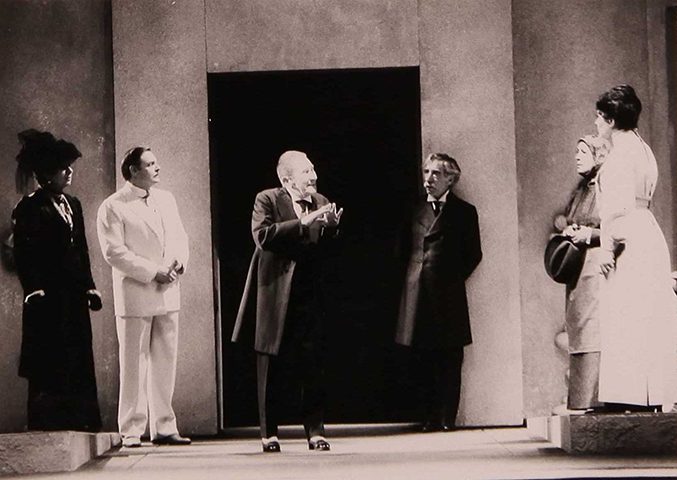Debutto: Cesena, Teatro Comunale A. Bonci, 15 febbraio 1984
| Regia | Luigi Squarzina |
| Regista assistente | Adriano Dallea |
| Scene e costumi | Gianfranco Padovani |
| Musiche | Paolo Terni |
| Produzione | Nando Milazzo |
Personaggi e interpreti
| Ciampa, scrivano del Cavaliere | Paolo Stoppa |
| Beatrice Fiorica, moglie del Cavaliere | Miriam Crotti |
| La Saracena, rigattiera | Carla Calò |
| Fana, vecchia serva della famiglia | Rita Livesi |
| Fifì Labella, fratello di Beatrice | Antonio Fattorini |
| Assunta La Bella, madre di Beatrice | Anna Maria Bottini |
| Nina Ciampa, moglie dello scrivano | Fiamma Trentanove |
| Il delegato Spanò | Alberto Sorrentino |
Squarzina ancora una volta propone una lettura innovativa. Libera la commedia dalla dimensione della sicilianità e dalla forma dialettale; la rende moderna ed europea, grazie anche all’interpretazione di Paolo Stoppa. Ciononostante non subordina l’impostazione dello spettacolo alla mattatorialità del protagonista che, in passate edizioni, mutilava il testo a proprio vantaggio. Squarzina mette in scena, in lingua, l’edizione quasi integrale della primitiva stesura dialettale, A’ birritta ccu’ i ciancianeddi, reintroducendo una serie di battute soppresse forse per autocensura perché esprimevano la rivolta della donna contro il dominio dell’uomo o perché infastidivano il primo attore. Viene così reintrodotta la scena dello scorpione che la protagonista crede di vedere tra le lenzuola e schiaccia, mentre sta per partire.
L’originalità della lettura del regista si estende alla nuova configurazione di Ciampa, interpretato da uno straordinario Paolo Stoppa, che non è più il personaggio stereotipato di precedenti versioni, un ribelle represso, ma un intellettuale autodidatta dignitoso, lucidamente aggressivo e fermo nelle sue convinzioni, pur senza esagerazioni.
Anche questo spettacolo ottiene uno straordinario successo di critica e di pubblico.

